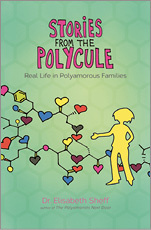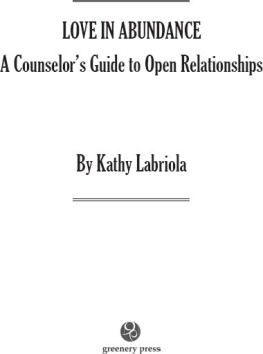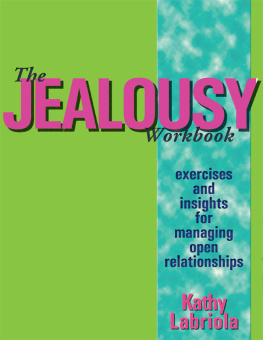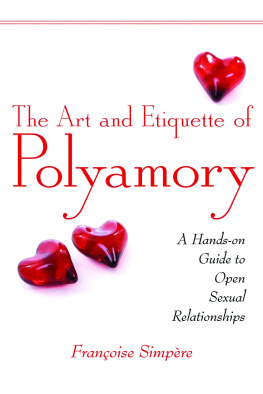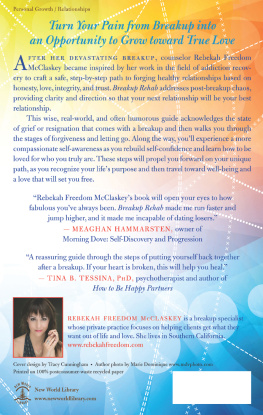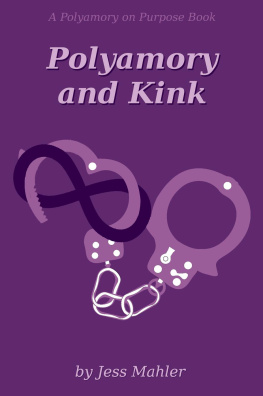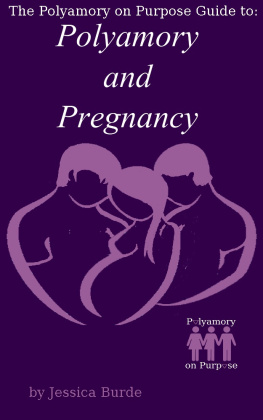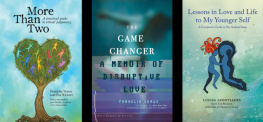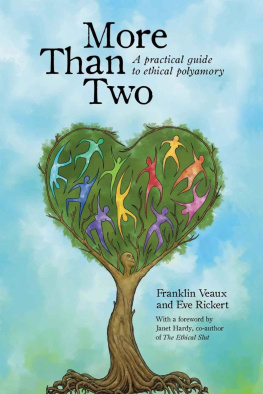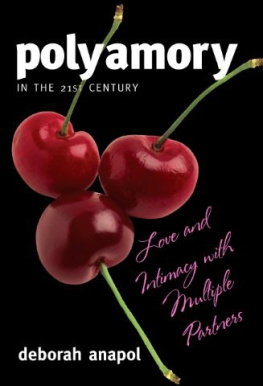I owe a special thanks to my life partners, Eric and Ricky. Each of them has generously given up receiving some of my time and attention so that I could focus on completing this book. They have been my strongest supporters and given me love, encouragement, ice cream, neck rubs, and smiles whenever things were challenging.
And I send my heartfelt gratitude to Eve Rickert and Thorntree Press, who believed in this book and took a chance on me and on publishing this book. Eve worked with me over a period of two years throughout every stage of the writing, editing, and publishing process. Thanks, Eve, for your patience, skill, and wisdom in midwifing this book to completion and publication!
In addition, I would like to thank Samantha Manewitz, LCSW , for assisting with the writing and editing of the section on abusive relationships, in Chapter 5. Her help dramatically improved this section, and for that, I am very grateful.
I want to send a big shout out and thank you to Lacey Johnson, the artist who created the beautiful and funny illustrations for the book. As soon as I saw Laceys terrific zine, Green-Eyed Monsters: My Report on Jealousy, I immediately knew what was wrong with my first two books: no cartoons! What was I thinking? I was hooked on her comics and zines, and I knew I wanted her illustrations in my new book. Thanks, Lacey!
Last but definitely not least, I owe a huge debt of gratitude to the 45 people who allowed me to interview them for this book. They generously gave me their time and bravely bared their souls to tell me their stories about very painful breakups of polyamorous relationships. Each person described a unique set of circumstances and each experienced their own journey. However, what they went through and what they learned helped me glean some useful lessons that I believe will be very helpful to the readers of this book.
Foreword
At last, Kathy Labriola has given us the book we have needed for a very long time.
When I was a teenager, in the 1950s, divorce was a disaster that people whispered about. At that time, marriage was expected of everyone, and if your marriage had problems, you must be doing something very wrong.
The traditional concept of marriage in Western culture is based on the importance of family in agrarian society. Long-term commitments are needed to keep a farm going and ensure that nobody starves in the winter. Marriage meant stability, and stability was absolutely necessary for survival. This one-size-fits-all notion still shows up as our gold standard today, but the truth is that our financial security no longer depends on the stability of our relationships.
As we evolve into a new age of intimate partnerships, space opens up for each of us to enter into many different kinds of relationships, with many different kinds of people. Physical connections can be about many different kinds of sex, can include different genders, feature fantasies, or be about outercourse. Romance can be equally variedfrom courtly to passionate, from falling in love to I couldnt help it.
People live together for financial security, for companionship, as co-parents, retirement buddies, or nesting partners. Sex and romance may or may not be included in any one of these connections. We can achieve emotional security in any relationship by mutual support, transparency, and good communication. We can even enter into intimate connections out of curiosity, attracted by the appeal of something outside of our own culture and experience. For me, this was a revelation that allowed me to see outside the limits of my own familys values.
Lets not forget the magnetic attraction of opportunities to struggle with unfinished business from childhood. Many of us yearn to fix our parents, or to learn a better way to deal with bullies. Some relationships, even if brief, can provide a form of healing that helps us move through deeply rooted pain.
In any connection, there can be freedom of choice in how casual, deep, intimate, or autonomous you choose to be. It may not be your path to seek out abundance, but most people can expect to have at least several important relationships in a lifetime. Some of these relationships may be similar and a pattern may be revealed. Others may have wildly different relationship experiences.
Many of our relationships work best if theyre allowed to run their natural course. For some, they can be considered as serving a purpose, and then when we have learned what we needed to, its time to accept an end. Such connections might last weeks, months, or years, but duration is not the measure of their value.
With diversity in our love lives comes a lot more breakups than in traditional relationship models, but this too is valuable experience. Consider what might change if we were to embrace the freedom of exploring sexual connections and relationships that may never become the one. What would our lives be like if we valued each relationship for what is important in the connection, not for how close it comes to being the permanent pairing of our fantasies?
The old rules tell us that when a relationship doesnt work any more, someone must have done something wrong, that it must be someones fault, that maybe we made a big mistake. The rules also insist that ending an intimate relationship must be drastically painful, terrifying, and enraging, that breakups always feature every scary emotion we can experience, at full volume.
We are told that the way to avoid feeling pain is to never set eyes on the person we were intimate with again, that it would be catastrophic and we couldnt bear it. So we make sure our friends dont invite the person we used to love to parties and social events. Only one of us may continue in that community, whether its a school, a job, or a neighborhood. There can be no more mutual friends.
But this reaction isnt necessary. Back in the 1970s, I spent about a year terribly depressed recovering from the breakup of a very special partnering. My ex, Robin, wanted to resume exploring our extra-special sexual connection, but I felt I couldnt. After my depression finally passed, we resumed our connection as intimate friends complete with our sexual dynamite and continued playing together for nine more years. It was definitely what we did best.
More recently, in 2015, my friends and family gathered around me while I underwent spinal surgery and a lengthy hospitalization. Joi, an ex of mine, took turns with my adult daughter sleeping in my hospital room for the first two weeks and offered endless support for months afterwards. I put out word that when I got out of the hospital, I could use a month in a guest room in San Francisco with no stairs and no need to drive. I was immediately offered healing sanctuary in the home of a dear friend with whom I broke up in 1979. Could it be that an army of exes cannot fail?
Im terrifically grateful that my early years of refusing monogamy involved membership in a huge extended family of sluts, many of us with children, houses, careers, and all the other grown-up commitments. If I had a date with someone in that family, wed start by hanging out at the home of whomever was hosting the childrens pajama party so that the rest of us could go out dancing. When it was my turn to be with the kids, I got to co-parent 13 children and become auntie to quite a few more. The kids got abundant adult support and the experience of having siblings in a huge family plus the privilege of going home to a smaller family.
When a relationship within that family ended, we couldnt very well yank our children out of the family and tell them to shun their siblings, so we had to work things out in a way that didnt threaten the survival of our extended family. We wound up figuring out a lot of conflicts that I previously would have run away from and I learned a lot. One lesson was that the ending of an old relationship could be the beginning of a new oneoften with the same person.

